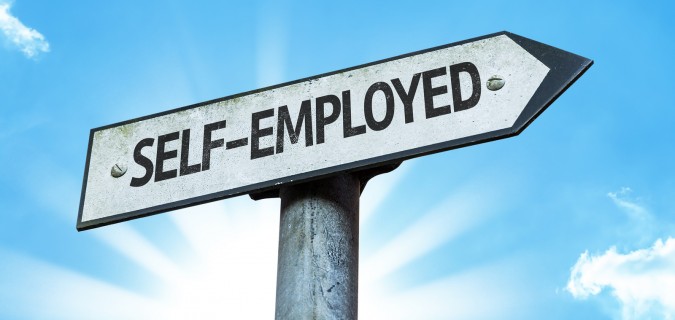Paycheck Protection Loans were created by the CARES Act and are designed to give small businesses and self-employed individuals relief for payroll costs during the COVID-19 pandemic. Loans are funded and fully backed by the federal Small Business Administration (SBA) and applied for through banks and other lenders. The loans have no origination fees, and require no personal guarantee or collateral. The loans are eligible for up to 100% forgiveness.
The application process for self-employed individuals opened Friday, April 10, and rules for these loans was issued by the Treasury and SBA yesterday, April 14. New guidance is issued on a near-daily basis, so the information below is subject to change.
Please note, this guidance is for self-employed individuals who filed or will file Schedule C for 2019 and were in operation on February 15, 2020. Self-employed individuals who won’t file Schedule C for 2019 but will for 2020 and were in operation on February 15, 2020 will be included in later SBA guidance.
Treatment of Partners
Partners in partnerships are excluded from the definition of self-employed individuals and are directed to include their share of self-employment income in the partnership’s PPP calculation. This is a significant change from previous guidance, which appeared to indicate that partners would not be eligible to be included in a partnership’s PPP loan.
Partnerships and LLCs taxed as partnerships who already applied for a PPP loan but have not received funds yet should immediately contact their lenders and request to amend the application. Those who already received loans should contact their lenders to see if amounts can be changed to include eligible partners.
Partners included in this guidance are “active general partners,” which is a designation shown on the partner’s Schedule K-1 and may also be indicated by the presence of a positive self-employment earnings amount in Schedule K-1 box 14. Guaranteed payments are not specifically addressed, but by inference would be included if the guaranteed payment constitutes self-employment income of an active general partner. These partners are not allowed to apply for their own PPP loans and should seek funding through their partnerships.
Schedule C Filers: Calculating the Loan Amount
For Schedule C filers, the loan amount will be based on net 2019 Schedule C profit, capped at $100,000. This figure is divided by 12 and multiplied by 2.5 to determine the loan amount. Thus, the maximum loan amount is $20,833.
If 2019 Schedule C profit was less than $100,000, the maximum loan amount will be accordingly less. For example, a 2019 Schedule C profit of $50,000 will provide a maximum loan amount of $10,417. If the Schedule C filer recognized a loss in 2019, the loan amount will be zero.
Schedule C filers with employees can add the above figure to their PPP loan amount for employee payroll. Please refer to PPP guidance for employers for more information.
Be careful: the loan amount could be higher than the forgivable portion. See below for details on forgiveness.
Required Documentation
To document the loan, you must provide the lender with your 2019 Schedule C, even if you haven’t yet filed your 2019 individual income tax return. You must also submit a 2019 Form 1099-MISC you received showing nonemployee compensation in box 7, or an invoice, bank statement or accounting book showing that you are self-employed. You will also need to provide an invoice, bank statement, or accounting book showing that you were still self-employed on February 15, 2020.
Loan Forgiveness
The rules specify that a maximum of $15,385 of the loan amount may be forgiven for Schedule C income replacement. This is calculated as $100,000, divided by 52, times 8. If 2019 Schedule C income was less than $100,000, then the maximum forgivable income replacement will be limited to 2019 Schedule C income divided by 52, times 8. As noted above, this is not the same calculation as the loan amount.
Furthermore, the new guidance specifies that home office expenses cannot be paid for with PPP funds. Only separate business premises or equipment and vehicle costs (mortgage or car loan interest, rent, and utilities) may be included. The rule that no more than 25% of the forgivable loan funds may be used for rent, utilities, or mortgage interest still applies as it does for employers.
The result of these rules is that a Schedule C filer with no employees will need to have the following attributes to be able to use the maximum forgivable loan amount:
- 2019 net Schedule C profit of at least $100,000 ($15,385 for the 8-week period, 75% of forgiveness amount)
- Rent, interest, and utilities of outside-of-home premises or equipment of at least $641 per week on average ($5,128 for the 8-week period, 25% of forgiveness amount)
That adds up to $20,513, whereas the maximum loan amount is $20,833. What happens to the $320 difference? We don’t know, but it would seem that it needs to be repaid. At this time, we do not know if SBA and Treasury will issue guidance to resolve this discrepancy.
Many Schedule C filers without separate premises or equipment cost will find that they are limited to forgiveness below the maximum loan amount. We recommend that you speak with your lender to have a full understanding of the program and amount you can claim.
If you need help or have questions about this information, please speak with your Saville relationship partner.

